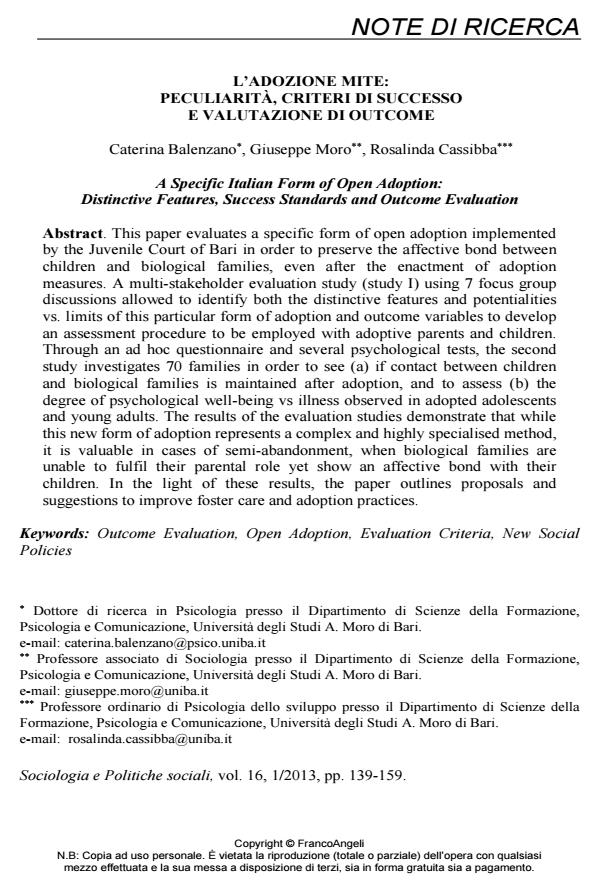L’adozione mite: peculiarità, criteri di successo e valutazione di outcome
Journal title SOCIOLOGIA E POLITICHE SOCIALI
Author/s Caterina Balenzano, Giuseppe Moro, Rosalinda Cassibba
Publishing Year 2013 Issue 2013/1
Language Italian Pages 21 P. 139-159 File size 241 KB
DOI 10.3280/SP2013-001008
DOI is like a bar code for intellectual property: to have more infomation
click here
Below, you can see the article first page
If you want to buy this article in PDF format, you can do it, following the instructions to buy download credits

FrancoAngeli is member of Publishers International Linking Association, Inc (PILA), a not-for-profit association which run the CrossRef service enabling links to and from online scholarly content.
- Pre-adoption adversities and adoptees' outcomes: The protective role of post-adoption variables in an Italian experience of domestic open adoption Caterina Balenzano, Gabrielle Coppola, Rosalinda Cassibba, Giuseppe Moro, in Children and Youth Services Review /2018 pp.307
DOI: 10.1016/j.childyouth.2018.01.012 - Approccio partecipativo e valutazione di outcome: l'uso del brainstorming nella definizione dei criteri per valutare l'efficacia dei percorsi adottivi Caterina Balenzano, in RIV Rassegna Italiana di Valutazione 65/2017 pp.7
DOI: 10.3280/RIV2016-065002
Caterina Balenzano, Giuseppe Moro, Rosalinda Cassibba, L’adozione mite: peculiarità, criteri di successo e valutazione di outcome in "SOCIOLOGIA E POLITICHE SOCIALI" 1/2013, pp 139-159, DOI: 10.3280/SP2013-001008